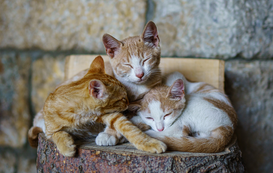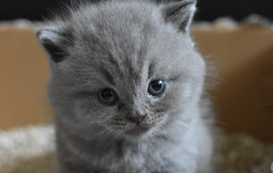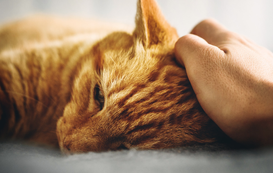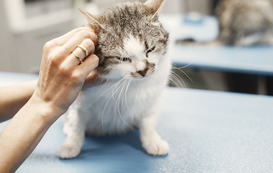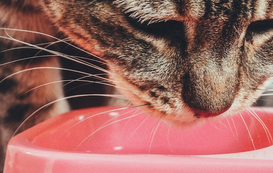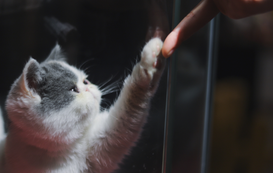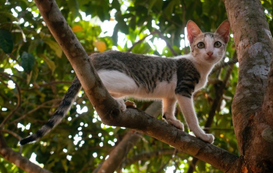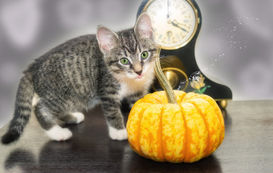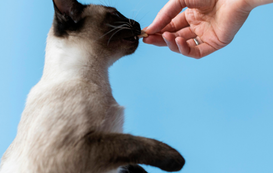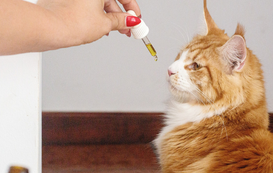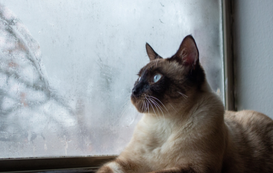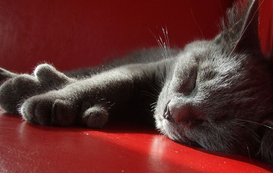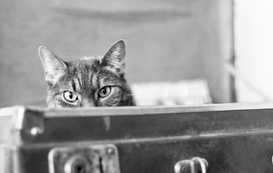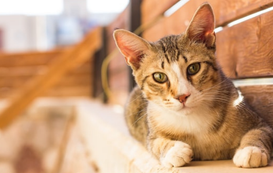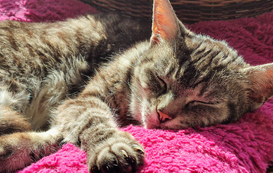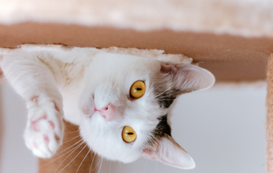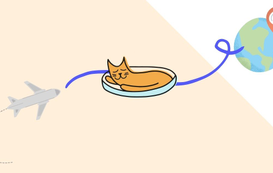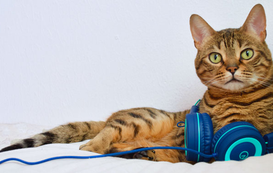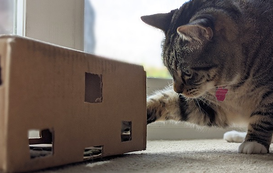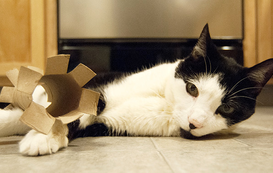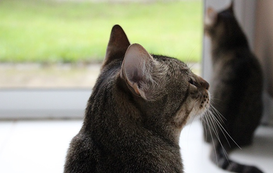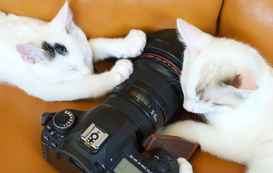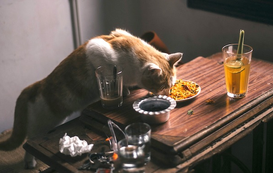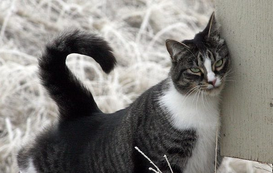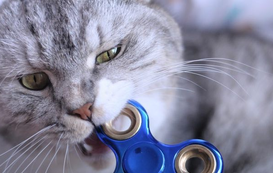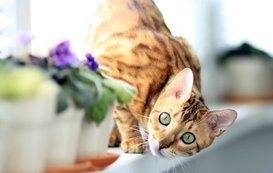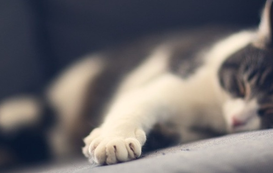- Home
- Cat Sitter Blog
- Cat Ownership
- May 14: National Animal Disaster Preparedness Day
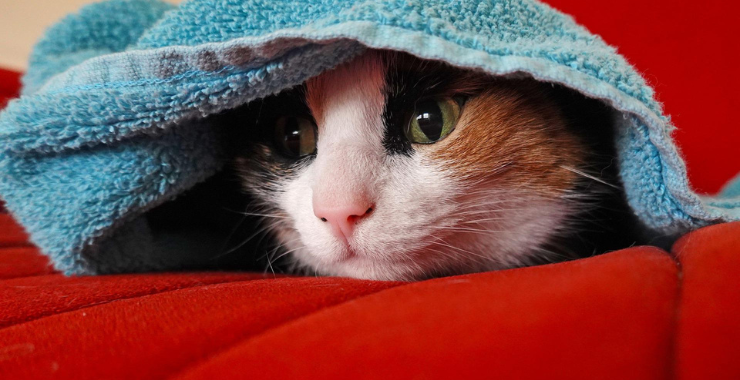

Popular posts
May 14: National Animal Disaster Preparedness Day
Disasters can strike at any time. Unfortunately, many pet owners may not know how to handle such a situation. National Animal Disaster Preparedness Day reminds us that the best thing pet owners can do is be prepared.
Our cats must be factored into our evacuation strategy, just like any other part of our family. So, the better you prepare, the better you can protect yourself and your furball. . Did you know that cats can sense natural disasters? Cats can feel storms and other catastrophes coming before humans. Our feline besties can also get easily frightened by loud sounds and movements, making them go into panic mode. That can lead them to run away, get lost, or even get accidentally injured. So, it is crucial as kitty parents to be prepared and have a natural disaster strategy that includes our beloved fluffy family members.
Here are a few tips and recommendations for protecting your furbaby in the event of a disaster:
Be prepared, make a plan ahead of time
National Animal Disaster Preparedness Day is all about, well, being prepared. Of course, it is difficult to predict how any of us would react in a scary situation such as a tornado or a wildfire. But there are always things we can do to be prepared.
Make sure Fluffy is properly identified
Your cat must have some form of identification. An ID tag is a perfect place to start. In the unfortunate scenario that Fluffy gets lost in the chaos, an ID collar will ensure the person who finds them has your information and alerts you right away.
Opt for a collar with a breakaway closure so that the kitty doesn't get stuck or accidentally injured. There is no need to get a collar with a bell, as the constant ringing can put your cat in distress. You can even get a GPS tracker for your cat, to be extra sure.
Microchipping is an even better way of identifying Fluffy. Since the microchip is implanted in between your furball's shoulder blades, it remains on your cat no matter what and can never be misread. Microchips can be read with a special scanner by any authorized veterinarian professional or animal rescue. Ensure the chip is registered correctly and updated with your current contact information.
Finding temporary accommodation
If, for some reason, you find yourself away from home when disaster hits, find a friend or a professional who would be able to go pick up your kitty for you. Also, list the places that would likely welcome you and your cat, as shelters might be at total capacity and unable to house your cat.
Have a plan in case you need to evacuate. Research nearby emergency shelters beforehand and pet-friendly destinations to know where to go if you need to evacuate. Some local hotels and hostels may be willing to accept cats in an emergency.
Establish a bond of trust
Being your cat's safe person will help them better cope with a stressful situation. It will take time and patience, of course, but it is important to consistently keep working on establishing a solid, trusting relationship with your purr-baby.
Cats can be unpredictable in a stressful or scary situation, but it is always worth trying to get your cat to listen to you. Teaching Fluffy a few commands can really come in handy in this case.
Keep a photo record of your cat
Remember to take a few high-quality, full-body pictures of Fluffy every year. Keep them on your phone and also print out some physical copies. If your cat runs away or gets lost during a natural disaster, it will be much more effective to look for him with a photo than to post it on social media.
Make your kitty go-bag
Fill an easy-to-carry bag with a pet first aid kit, enough food, water, medications, or other essentials -- simple things your cat would need for two or three days if you have to leave your home.
Here's a quick list to get you started. Feel free to modify and adapt it to your cat's unique needs.
- Food (opt for wet food in case you're ever short on water)
- Enough water for a week or two
- A bowl
- A carrier and possibly a harness (if Fluffy is harness-trained)
- A litter box with litter
- Plastic bags to clean the litter
- Some type of bedding
- Pet identification, including medical records and vaccination booklet
- Super important: Don't forget their medication
- Something that can comfort them, like their favorite toy or a soft blanket
- Recent photos of your cat
Protecting your cat during a natural disaster
Keep your cat in a carrier
Cats may panic and frantically try to run away due to frightening noises and unfamiliar surroundings. If you have to leave your house in a hurry or evacuate your neighborhood, put Fluffy safely in their carrier before taking them with you.
It might be wise to have an extra carrier stored away, just for emergencies. You can place a light sheet on top of it that covers the side to keep Fluffy from witnessing any hectic commotion that will make them even more frightened.
In case of an emergency or a natural disaster, your cat may become highly anxious and bite or scratch you. That is a normal reaction for cats in distress, and you shouldn't take it personally. But a good pair of thick gloves will help you get Fluffy safe inside their carrier faster and pain-free. It is also a good idea to keep a pair of gloves nearby or inside that carrier.
Confine your cat if needed
For residents of non-evacuated neighborhoods where air quality may be poor due to the spread of smoke or ash, it is recommended to keep their cats indoors- this will protect them from respiratory and other health problems. Make sure to close all the windows and doors.
Like humans, cats will become anxious when their sense of safety is compromised. Make sure you provide them with their favorite toys, a nice comforting blanket, and access to a few hiding places. It might be wise to separate cats if you have multiple cats, as stress can affect their behavior.
Never leave your cat alone in the car
This one seems like a no-brainer. Cats can suffer from heat strokes if the temperature rises too high, even with the windows rolled down, which puts their liver and ability to control their muscles at risk. In addition, their brains can be irreversibly damaged, and their hearts can stop beating.
Stay away until it is safe to come back
Do not bring Fluffy back to your home or your neighborhood if the disaster has significantly altered its usual environment, as this may disturb it. It is preferable to leave your kitty in a safe area, free of contaminants or dangerous materials (e.g., wastewater, cables, smoke, etc.).
Wrapping up
No matter where you live, no one is safe from a natural disaster, and it's best to be prepared for the possibility of an evacuation or an emergency. Whether it's a fire, a storm, or a flood, it's always good to have a strategy to protect yourself and your furry best friend. They are counting on us.
Photo by dassel on Pixabay




